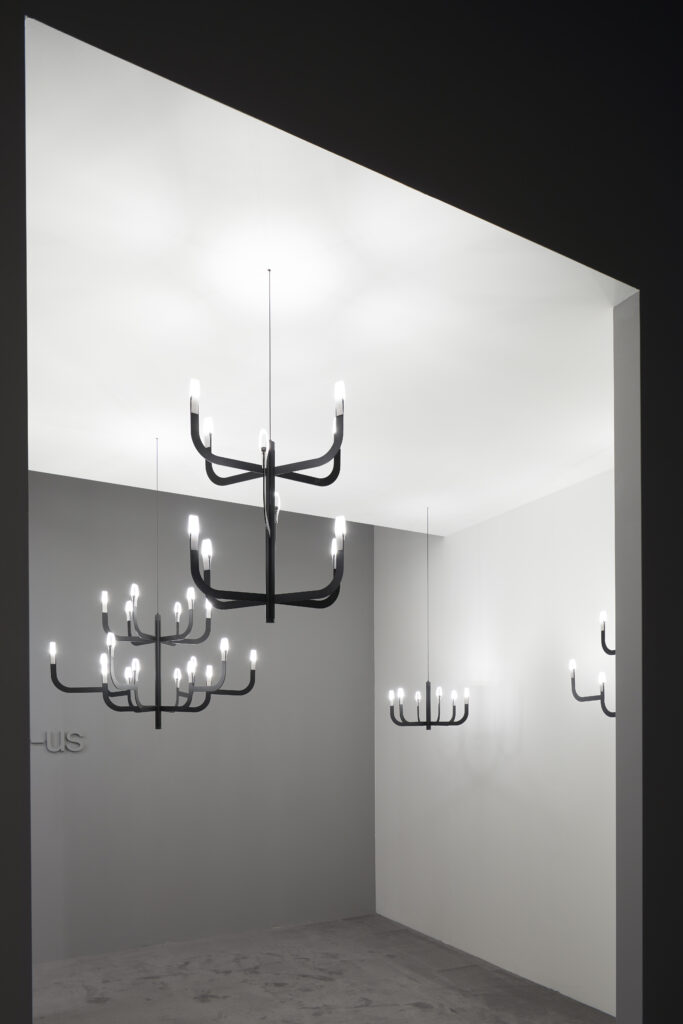Stories

J-us, a dialogue between tradition and innovation.
“I designed a new object seeking a key of evolution with respect to the past, an element that makes a project unique and unexplored.
J-us is a reinterpretation of the classic chandelier, and it sets out to be a way of narrating the history of a classic, completely detached from its principles of classicism. A game of negations (…) I have explored other worlds, especially those connected with technology, to find a new key of interpretation.
The intention was to design a lamp without visible power cables. (…) The light source had to maintain an aura of gentility. (…)
An immaterial space that becomes material thanks to the light itself.”
Alessandro Zambelli


J-us Suspension,
Designed by Alessandro ZambelliAn original vision of the traditional chandelier

Luceplan presents an original vision of the traditional chandelier with arms, in which technological innovation, research on materials and new solutions for electrical conduction are completely hidden from view. The lamp reinterprets this concept in a contemporary way, while avoiding a futuristic image.
Thanks to the warm, high-performance LED lighting and a light, dynamic design of great visual impact, J-us brings an inventive, refined but never overbearing presence to any space.
J-us has been selected by the ADI Osservatorio Permanente del Design for publication in the ADI Design Index 2024, an honor that puts the product in the running for the Compasso d’Oro awards in 2026.

The central structure is a cylinder with a diameter of 30 mm and available in two dimensions (53 cm and 35cm high), which acts as a novel electrified track to accommodate the arms of the chandelier, assembled in a vast range of configurations.
The arms are made in a layered material usually utilized to produce electrical circuits, allowing the current to flow in a practical and functional way. The built-in LEDs offer warm, enveloping glow, suggesting the memory of candlelight. The structure is in aluminium the arms in copper and fiberglass, while the diffusers are in technopolymer.
Featuring a slim profile and forceful lines, the chandelier is available in
a range of different configurations, thanks to the possibility of creating multiple levels of arms arranged on the central structure, with the option of increasing the diameter by attaching a second ring of arms to the one inside.

In the words of the designer, Alessandro Zambelli
For the sale of our products we rely on a selected network of official partners, located all over the world, to guarantee authentic products and services. Find your nearest dealer and discover the collection.
SearchDownload the brochure and discover more about J-us
Discover more